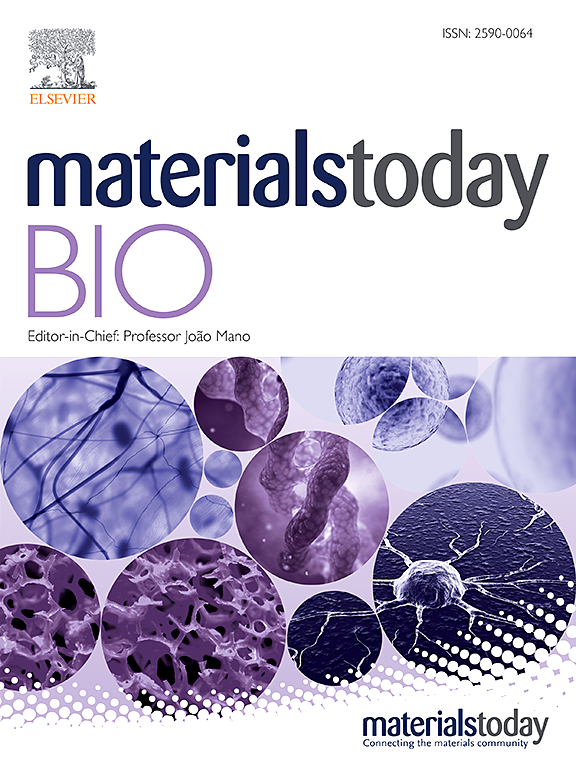Digital light processing printing of non-modified protein-only compositions
IF 8.7
1区 医学
Q1 ENGINEERING, BIOMEDICAL
引用次数: 0
Abstract
This study explores the utilization of digital light processing (DLP) printing to fabricate complex structures using native gelatin as the sole structural component for applications in biological implants. Unlike approaches relying on synthetic materials or chemically modified biopolymers, this research harnesses the inherent properties of gelatin to create biocompatible structures. The printing process is based on a crosslinking mechanism using a di-tyrosine formation initiated by visible light irradiation. Formulations containing gelatin were found to be printable at the maximum documented concentration of 30 wt%, thus allowing the fabrication of overhanging objects and open embedded. Cell adhesion and growth onto and within the gelatin-based 3D constructs were evaluated by examining two implant fabrication techniques: (1) cell seeding onto the printed scaffold and (2) printing compositions that contain cells (cell-laden). The preliminary biological experiments indicate that both the cell-seeding and cell-laden strategies enable making 3D cultures of chondrocytes within the gelatin constructs. The mechanical properties of the gelatin scaffolds have a compressive modulus akin to soft tissues, thus enabling the growth and proliferation of cells, and later degrade as the cells differentiate and form a grown cartilage. This study underscores the potential of utilizing non-modified protein-only bioinks in DLP printing to produce intricate 3D objects with high fidelity, paving the way for advancements in regenerative tissue engineering.

非修饰蛋白组合物的数字光处理印刷。
本研究探索了利用数字光处理(DLP)打印来制造复杂的结构,使用天然明胶作为生物植入物应用的唯一结构成分。与依赖合成材料或化学修饰的生物聚合物的方法不同,本研究利用明胶的固有特性来创建生物相容性结构。印刷过程是基于一个交联机制,使用二酪氨酸形成由可见光照射引发。含有明胶的配方被发现在最大记录浓度为30% wt%时可打印,从而允许制造悬垂物体和开放嵌入。通过检查两种植入物制造技术来评估基于明胶的3D结构上和内部的细胞粘附和生长:(1)细胞播种到打印支架上;(2)打印包含细胞的组合物(细胞负载)。初步的生物学实验表明,细胞播种和细胞负载策略都可以在明胶结构中进行软骨细胞的3D培养。明胶支架的机械特性具有类似于软组织的压缩模量,因此能够促进细胞的生长和增殖,并在细胞分化和形成软骨的过程中降解。这项研究强调了在DLP打印中利用非修饰蛋白生物墨水生产高保真复杂3D物体的潜力,为再生组织工程的进步铺平了道路。
本文章由计算机程序翻译,如有差异,请以英文原文为准。
求助全文
约1分钟内获得全文
求助全文
来源期刊

Materials Today Bio
Multiple-
CiteScore
8.30
自引率
4.90%
发文量
303
审稿时长
30 days
期刊介绍:
Materials Today Bio is a multidisciplinary journal that specializes in the intersection between biology and materials science, chemistry, physics, engineering, and medicine. It covers various aspects such as the design and assembly of new structures, their interaction with biological systems, functionalization, bioimaging, therapies, and diagnostics in healthcare. The journal aims to showcase the most significant advancements and discoveries in this field. As part of the Materials Today family, Materials Today Bio provides rigorous peer review, quick decision-making, and high visibility for authors. It is indexed in Scopus, PubMed Central, Emerging Sources, Citation Index (ESCI), and Directory of Open Access Journals (DOAJ).
 求助内容:
求助内容: 应助结果提醒方式:
应助结果提醒方式:


